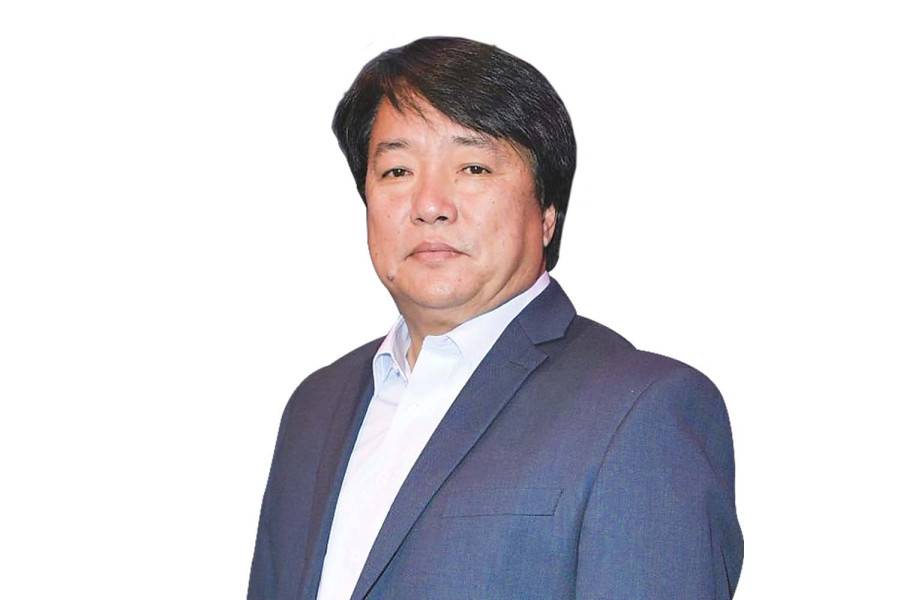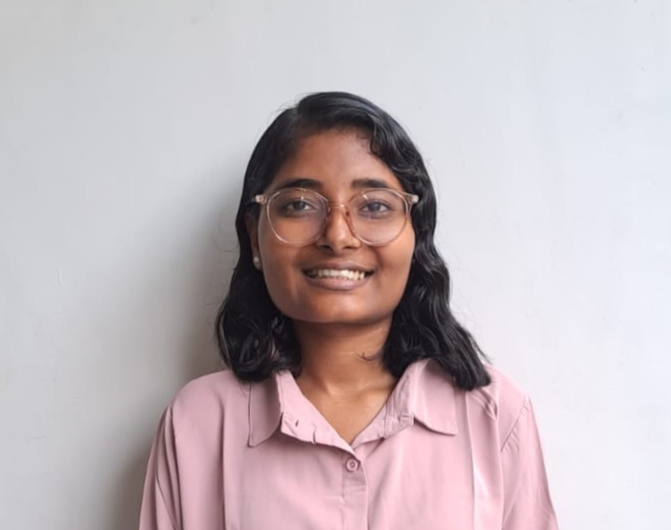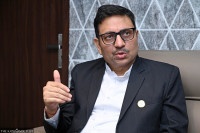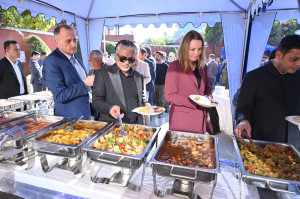Culture & Lifestyle
Bringing marginalised stories to the fore
Director Nabin Subba discusses his upcoming film, ‘Gau Aayeko Bato’, its making, and his future projects.
Aarati Ray
Nabin Subba, a veteran Nepalese film director, screenwriter and producer is celebrated for his focus on indigenous communities.
He has directed internationally acclaimed films like ‘Khangri’ and ‘Numafung’. His upcoming movie, ‘Gaun Aayaeko Bato’ (A Road to a Village), will be released on June 7.
The movie also premiered at the 48th annual Toronto International Film Festival last September and has been screened at other prestigious international festivals, including the Busan International Film Festival, Mumbai Film Festival, Beijing International Film Festival, and Goteborg Film Festival.
In an interview with the Post’s Aarati Ray, Subba discusses his upcoming film, ‘Gau Aayeko Bato’, its making, and his future projects.
What inspired the story of this movie?
Recently, the village has experienced some development, including new roads, electricity, and a health post, but it remains deserted. People aren’t staying, and we've often wondered why. Twenty-five years ago, on a flight to Europe for a film festival, I met a young man from a distant village who was on his way to the Middle East for work.
His fear and uncertainty made me question why people leave their families and homes to work abroad. This movie is my attempt to understand and answer these questions.
Was it predetermined for the movie to be set in the Rai community?
The script centres on the Rai community because our writer is Rai. His longing for his relationship with his father and son forms the story’s foundation. The movie explores how a newly constructed road in the remote eastern Himalayas of Nepal affects this father-son relationship.
The film isn't solely about the Rai community; it broadly examines the impact of development on traditions and family bonds. This story could also take place in Madhesh, Sudurpaschim, or any other region and community, with only cultural nuances and varying belief systems.
You wrote the script together with Mahesh Rai. Was it difficult for you to distinguish between your roles as a scriptwriter and a director, considering the usual conflicts between these positions?
There’s a saying that “a writer dies after writing”, which fits perfectly with movie-making. In script analysis, it's said that the writer has died. Often on set, people ask about the writer's intention for a scene.
I would tell them that instead of focusing on the writer’s intention, we need to focus on the text itself and our understanding of it. As a director, I didn't work based on what I wanted to convey as the scriptwriter.
I treated the script purely as a text. Once the movie reaches the screen, the director's intention also ‘dies’, and it’s up to the audience to interpret and understand the message.
Even though a director's intent ‘dies’ once the movie is on screen, is there a key message or element from the film you hope audiences will grasp?
One can view it through the lens of the changing father-son relationship due to modernisation, where children leave for jobs abroad, leaving their parents behind. Another perspective is the clash between development and tradition, illustrated by how road construction impacts village customs.
There isn’t one fixed message, as we've incorporated layers into the film, such as village life versus city life and the clash between tradition and progress. This allows viewers to focus on what resonates most with them.
Given recent events like the mass tree cutting in Taplejung, highlighting conflicts between development and tradition, your movie resonates deeply. As a director addressing similar clashes in indigenous communities, what form of development do you believe is vital for them today?
This issue affects everyone, not just indigenous communities. Human activities like deforestation and rapid development contribute to climate change. We need to reconsider our approach to development.
While other countries preserve old monuments alongside progress, in Nepal, development often means destroying old structures. We must question how sustainable this approach is and its impact on climate change. For example, recent tree cutting in Taplejung for a cable car project has sparked protests, primarily from the indigenous community, but it affects all communities.
This impacts biodiversity, including the habitat of the red panda, and local businesses, such as those of the Khas Arya community. In this way, the movie also highlights the global debate between development and tradition and the need for sustainable development.
Your previous film, ‘Numafung’, centred on the Limbu community, another indigenous group. Have you encountered criticism for spotlighting indigenous communities in your films?
Such criticisms are common due to societal power structures. However, we can't give up, as it's crucial to address marginalised issues. We should raise awareness, support those affected by inequality and the hierarchical system, and engage in constructive dialogue with those benefiting from the flawed system. After all, we are all working to reconstruct people’s structures and mindsets.
We've heard that your movie is ‘community funded’. What does this mean?
This is a new concept where the community invests in the movie, participates in its production and promotion, and recovers its investment. In our case, since the movie is about the Rai community, they are primarily involved in funding, marketing, and promotion. However, there are also contributions from non-Rai people who support important issues.
This approach has generated interest and enthusiasm, especially as the movie has been screened at international festivals. However, there are challenges, such as maintaining transparency and managing the many people involved. Despite these challenges, we believe this concept has great potential. Many filmmakers are exploring and refining this idea further.
How did you come up with the idea of community funding?
Previously, I used crowdfunding, but this time I wanted to involve the community directly in funding the movie. I was inspired by the Maori community's belief that films should be made by and for the community and that watching them should be a celebration. Even my upcoming movie project, ‘Pani ko Prem Katha’, is community-funded.
As this movie was screened at various film festivals, how was the international reaction?
The response has been amazing. Film festivals and heritage communities from Italy, Florida, and Colombo are still approaching us for screenings. I remember in Toronto, a black woman expressed how the story resembled her village, leaving me surprised at its global resonance. Similarly, during a Q&A at a film festival in China, a young boy asked, “The character of seven-year-old son Bindre (Prasan Rai) seems like me, my story. How did you know about this?” This deep connection with international audiences was a remarkable experience, unlike anything I’d encountered with my previous movies that also reached international audiences.
I have always believed in ‘local stories reaching global audiences’. So, I hope this movie can ignite interest and inspire positive change. Some screenings at film festivals even had cheers and whistles, which was unexpected. The reaction has been great so far, and we're excited to see how Nepali audiences will respond.
What are your future plans for a movie project?
I've always believed that movies can promote cross-cultural understanding and empathy for our differences. For example, in ‘Gau Aayeko Bato’, set in the Rai community, viewers can learn about their culture while connecting with universal themes like family relationships and traditions. That's why my future plan is to explore more diverse and underrepresented stories.
I've made movies about the Hilly and Himalayan regions, but I haven't yet explored the Madheshi region. I've been considering it because I believe the beauty and uniqueness of Madhesh should be appreciated by people from the Himalayan and Hilly regions as well. So, let's see what the future holds.




 7.12°C Kathmandu
7.12°C Kathmandu















